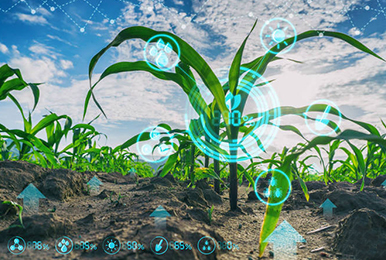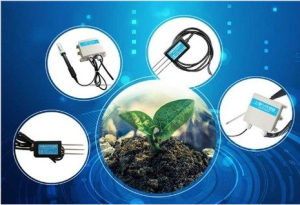What is smart agriculture?
Smart agriculture is the application of Internet of Things technology to traditional agriculture, using sensors and software to control agricultural production through mobile or computer platforms, making traditional agriculture more “smart”. In addition to precise perception, control, and decision-making management, in a broad sense, smart farming also includes agricultural e-commerce, food traceability and anti-counterfeiting, agricultural leisure tourism, agricultural information services, and other aspects.
“Smart farming” is the full application of modern information technology. Integrated application of computer and network technology, IoT technology, audio and video technology, 3S technology, wireless communication technology and expert wisdom and knowledge to realize agricultural visualized remote diagnosis, remote control, disaster warning, etc. management.

Smart agriculture is an advanced stage of agricultural production. It integrates emerging Internet, mobile Internet, cloud computing, and IoT technologies. It relies on various sensors (environmental temperature and humidity, soil moisture, carbon dioxide, image Etc.) and the wireless communication network to realize the intelligent perception, intelligent early warning, intelligent decision-making, intelligent analysis, expert online guidance of the agricultural production environment, and provide precise planting for agricultural production.

What are the basic components of smart farming?
Detection part: soil moisture sensor, light sensor, temperature and humidity sensor, atmospheric pressure sensor, and other agricultural sensors.
Monitoring part: professional software solutions for the IoT platform related to the computer or mobile phone app.
Transmission part: GPRS, LoRa, rs485, Wifi, etc.
Positioning: GPS, satellite, etc.
Assistive technology: automatic tractors, processing equipment, drones, etc.
Data analysis: independent analysis solutions, professional solutions, etc.
What are the applications of smart farming?
Precision agriculture
Through a large number of sensors installed in the target area of the farmland, real-time monitoring of temperature, humidity, light, gas concentration, soil moisture, electrical conductivity, and other information are summarized into the central control system. Agricultural production personnel can analyze the environment through monitoring data, thereby arranging production activities in a targeted manner, and mobilizing various execution equipment as needed, such as temperature adjustment, light adjustment, and ventilation. To realize the intelligent control of agricultural growth.
Intelligent animal husbandry
Precision Livestock Farming is mainly used in the stages of breeding and disease prevention. Wearable devices (RFID ear tags) and cameras are used to collect data on livestock and poultry activities, analyze the collected data, and determine the health status, feeding status, and location of the poultry, estrus prediction. Precision Livestock Farming can effectively reduce poultry mortality and improve product quality.


Smart greenhouse
Smart greenhouse usually refers to the multi-span greenhouse or modern greenhouse. It is an advanced type in facility agriculture and has a comprehensive environmental control system. The system can directly adjust the indoor temperature, light, water, fertilizer, gas, and many other factors. It can achieve high production throughout the year and good economic benefits. In recent years, with the rapid development of vegetable greenhouse construction, smart greenhouses have brought impetus to agricultural development.
Agricultural traceability system
The traceability of agricultural products is to collect relevant data of agricultural products in production, processing, warehousing, distribution, logistics and transportation, establish visual product files for agricultural products, fully display product safety and quality-related information to consumers, and achieve two-way visibility from farmland to table. At the same time, coding technology, helps agricultural production and circulation enterprises to realize product anti-counterfeiting and authenticity, and accurately obtain customer distribution data. It is a powerful tool for companies to build product brands and establish brand images.

How is the development of global smart farming?
Germany has invested a lot of money in the development of agricultural technology, and large companies have led the development of “digital agriculture” technology. The work of modern German farmers is inseparable from the support of computers and the Internet. The job at the beginning of every morning is to check the weather information of the day, check the market price of food and check emails.

Besides, in rice production in Japan, the amount of micro-agricultural drones has exceeded that of manned helicopters. The use of micro-agricultural drones for agricultural production has become one of the important trends in Japan’s agricultural development. In Canada, smart farming also incorporates agricultural Internet of Things information technology.
The agricultural big data website created by France brings more opportunities to farmers and changes the relationship between farmers and stakeholders such as banks, insurance companies, and agricultural mutual cooperatives.

Israel’s agriculture has high information and digital foundation. Many agricultural technology innovation companies use big data to help Israeli farmers and provide more personalized farming solutions based on the specific conditions of different farms.
The development of smart farming and the IoT has promoted the third green revolution in the world. Based on more precise and resource-efficient methods, smart farming has the real potential to provide more productive and sustainable forms of agricultural production.